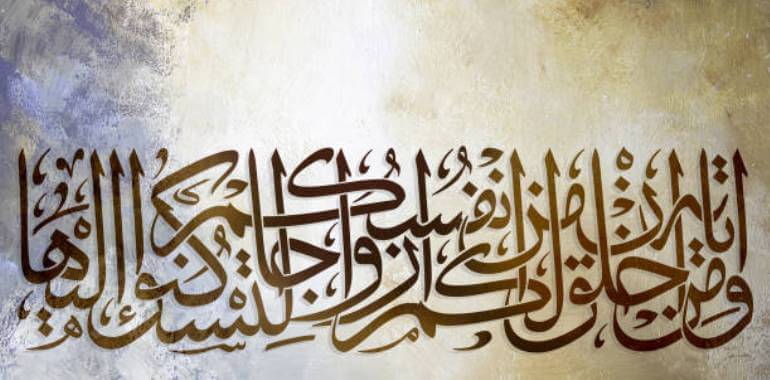Arabic Calligraphy: The Beauty of Arabic Language
Arabic is a beautiful language, and one of its most prominent feature is the writing style. The Holy Quran was revealed in the Arabic language, and Muslims respect everything that has any association with the Prophet and the Quran. Before Prophet Muhammad (PBUH), Arabic was the language that was spoken by the people in the Arabian Peninsula, but the written script was not very common. The revelation of the Quran changed that, and the Script started developing very rapidly.
The Art of Calligraphy
Art has been one of the most common element of every civilisation. From the Early Egyptian to Indian, Roman to Byzantine and even until the modern era, every society has revered Art in diverse forms. The Islamic Art has a very different form and structure and a very distinct style. Alongside the deep association with the Quran, one of the main reasons behind the rise of Calligraphy was the prohibition of figurative art. Muslims consider the painting and sculpting of humans and living beings to be idolatrous and strictly prohibited. The prohibition coupled with the strong association with the holy language made calligraphy the main source of artistic expression in Muslim Cultures.
Evolution of Arabic Calligraphy
Iqra (Read) is the first word of the Quran to be revealed. The first verses also contained the words Qalam (Pen) and Allama (Learn/ Taught). The emphasis on learning and the pen lead to a boom in education in Muslim societies. Baghdad during the Abbasid period became the learning centre of the world during the eighth century, and the centre moved to Cordoba in Spain, Damascus in Syria, and to different parts in Trukey, India and Africa during the later periods. The Calligraphic style in different parts of the world is different, and varies greatly.
Learning Arabic Calligraphy
The Qalam, a pen normally made of dried bamboo, is used by calligraphers. The pen is cut at an angle, and is dipped into ink of different colours. The angle and colour are of varying intensity providing greater dynamism to the composition. Calligraphy is not only restricted to paper and can be seen other decorative mediums like vessels, tiles, carpets, and inscriptions. Most of the Arab, Persian and Islamic Architecture contains an extensive amount of Calligraphic inscriptions. The Quranic verses make a large portion of such inscriptions. In modern societies, Calligraphic tattoos are also becoming very popular.
Styles
The Arabic Script has different forms ranging from different periods to distinct lands. Kufic script is the oldest form of the script. The early versions of the Quran were written in this script. The script lacked the dots and accents that are prevalent in modern day Arabic and went out of favour in by the 12th century. By the 10th century, the Naskh script started appearing and in a very short period of time, it replaced the kufic script entirely. The highly disciplined and elegant cursive is the basis of modern Arabic print. The Naskh style has three prominent variations – Thuluth, Riq’ah, and Muhaqqaq. Muhaqqaq is a highly revered majestic style adopted by extremely accomplished calligraphers.
Learning Calligraphy requires an extreme amount of dedication, and the students learn the art by repeating the designs of the expert calligraphers. If calligraphy interests you, then you can start by learning the basic Arabic alphabets. At SAIOI, our extremely qualified teachers help you learn and master the Arabic language in a very interesting and dynamic style. If you register now, you will get to spend one hour with our teaching staff without any charge at all. Register Now to book a free session!




